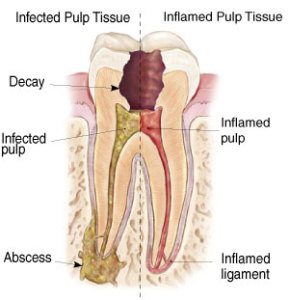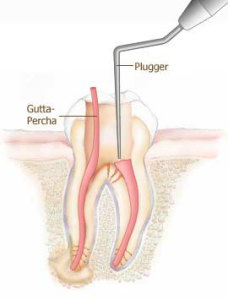By Arthur Kezian
If you were to ask someone what a root canal was their reply would most likely consist of the words “painful” or “scary”. Why is this so? Many people fear the procedure, when in reality, there isn’t much to be afraid of. Surely, there have been cases where a patient has not liked the procedure, but there have been twice as more cases where the patient has been satisfied. People associate root canal therapy to the pain they felt before the procedure, and so, saying that a root canal is painful isn’t necessarily correct. Before we can jump into why a root canal is actually very beneficial or the root canal cost, let’s break it down so you can have a better understanding of what happens.

Opening the Root Canal:
If you are having throbbing or pulsating pain coming from your tooth, it is probably because decay has reached the nerve of your tooth or there is an abscess and infection around the tip of your root. If this happens, you need to call an emergency dentistry. They should be able to get you right in and start the first step of the root canal. If the nerve of your tooth is dead, you wouldn’t really need anesthesia, but many dentists will give you some localized anesthesia anyways to make sure you are totally at ease and do not feel a thing. If the injection is the part you are afraid of, just remember, the pain lasts for a few seconds and then it is gone. We tend to hype things up in our minds and make situations seem worse than they really are. As long as you know you are in good hands, all you need to focus on is your breathing. Before you know it, the injection will be over.
Once you are fully numb, your dentist will create an access to the root of your tooth by drilling a hole from the biting surface. The bacteria is cleaned out, the decayed nerve tissues are taken out, and the pulp is removed. Specific files are used to make sure the tooth is thoroughly cleaned out. The first part to the procedure is done.

Closing the Root Canal:
The second part of the root canal therapy (RCT) involves closing the tooth back up. Depending on the circumstance of your tooth, the tooth may be closed the same day it is opened and cleaned out or it may be left open for drainage, will have medication placed inside, and will be closed during a following appointment. If this is the case, the tooth is not actually left open. A small, temporary filling is placed on the tooth to prevent food and bacteria from entering. Once the tooth is ready to be sealed, a rubbery material is placed inside the tooth. This material is called gutta percha, and it basically replaces the nerve of your tooth. Once the tooth is filled, a more sturdy filling will close the access hole the dentist had made to get into the tooth. This is the final step to your root canal. Most dentists recommend you get a crown placed on top of a tooth that has a root canal to provide strength and support to the tooth.
Now, we can state that a root canal procedure is very beneficial. It saves your tooth from being extracted and it saves you from a lot of pain. There is no reason to fear a root canal procedure, not even the root canal cost should worry you. Apart from an extraction, a root canal is the only way to stop a painful tooth from acting up.
If you have any questions regarding root canals or emergency dentists, feel free to call Dr. Arthur A. Kezian DDS. The office staff will be delighted to help you and answer all your questions. Dr. Kezian has been in the practice for more than 30 years and has done numerous root canal procedures. If a good, experienced dentist is what you need, call his office today.
Dr. Arthur A. Kezian DDS 443 N. Larchmont Blvd Los Angeles, CA 90004
